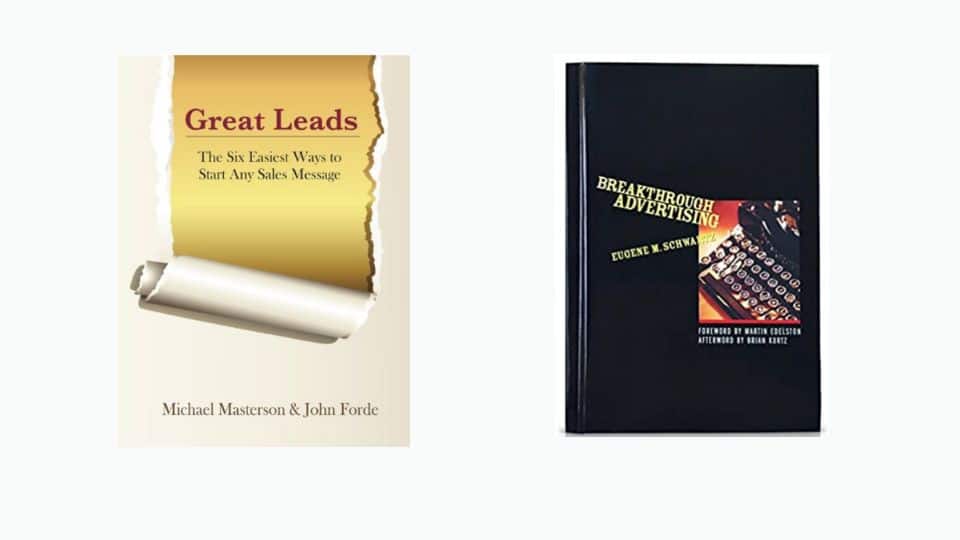Copywriting Research Process Using 7 Steps
In this article, I’m going to reveal a copywriting research process Using 7 steps whether you’re writing for your business, you’re a freelancer or writing for an agency.
This article will give you the confidence to gather the correct information and turn that research into converting sales copy.
However, this is NOT going to go through how to create the full copywriting sales letter…
Instead, this is all about setting up the structure of copywriting, preparing you through research to know exactly what to write that will set your sales letter up for getting real conversions.
Why Is Research Important In Copywriting?
The research phase of copywriting is probably the most important part and you shouldn’t write a single word until you get this down.
Otherwise, your copy won’t have the right sales language and won't resonate with your prospect unless you know as much as you can about them.
When you research you want to become a detective…
Searching and looking for all the pieces and putting them together to write up your conclusions.
And the most important thing about being a detective, is building up your very own case or in this context your swipe file.
Your swipe file will contain everything you need to write up your sales copy quickly.
It’s one of the most important pieces you’ll ever need in constructing the sales message.
Now when you’re doing detective work and researching your prospect and competitors.
Mindset is key:
Your mind must make a shift into stepping into the shoes of your avatar, focusing on empathy for your avatar and delving into their minds.
It can be a bit of a curse in a way because sometimes just like some actors it can be difficult to come out of character.
However, it will be extremely powerful when you genuinely have empathy and care about them when you write your copy.
But with all this said…
There are two main areas of focus you’ll have when researching through each step:
- Delving into your prospects world.
- Delving into your competitors.
Going back and forth as you go through each step as you research…
So let’s get into each step of what you need to look for when researching.
Step 1: Looking for their Problems/Pains/Villains
When searching for your customer's problems, you DO NOT want to look for big general problems, your product or service doesn’t sell to everyone.
Instead, you want to get very specific about who are you solving the problem for and what problem are you bringing up about them.
What’s that one thing that keeps them up at night, if only they could solve it everything will be different.
If you think about movies…
Movies and stories are driven by problems and the character always has to face a crisis whether it’s internal or external…
Because Without this, there wouldn’t be a story.
People would rather buy their way out of a problem instead of buying towards pleasure.
And that’s why I like to focus my copy on leading with problems.
Even change doesn’t happen with people until trauma or the problems are so big they need to fix it.
You want to also look at how the problem is affecting them internally and externally.
What’s their world becoming around them how serious is it getting and how much is it affecting them internally.
Then you want to ask within the problem, who's the villain, what’s stopping them or making it worse?
This could be a person, an addiction, or even a company.
Such as most food manufacturers don’t care about your health they throw in all the additives and unhealthy fats.
They use psychological persuasion and marketing to manipulate you to buy.
Or someone holding them back and making things worse find as much information around this and add it all into your swipe file…
Step 2: Search for the Unique Promise
When searching for a unique promise it really has to be UNIQUE.
Because of all the solutions that are already available for your avatar, you need to make your solution different from everyone else.
A promise that fits where you’re customer is at, that will be directly solving the problem.
Search for current solutions that people are moaning and complaining about that haven’t worked.
That’s where you come in adding that one thing required to help get your prospect out of the problem.
Filling the gap with the solution that you're promising.
Step 3: Find the Mechanism
The mechanism is what provides the solution, such as your product or service.
When you create your mechanism research what your competitors are using as their mechanisms.
Connect that with how their customers used the solutions for their transformation including what did and didn't work for them.
When creating a mechanism the goal is to innovate your competitor's solutions.
DO NOT STEAL OR COPY!
Only take the ideas from a couple of competitors and combine them and innovate something different from what their solution is.
Another tip is to look for something that no one’s speaking about.
Example
A company marketing vodka, Mentions how it was triple filtered … which all vodkas do but no one was mentioning it.
Now before moving away from mechanisms…
Here are some simple elements you want to make sure you have within it…
Do you have something no one else has, is it rare? If not make it rare!
Do you have something no one else speaks about?
What’s the biggest benefit it provides?
Step 4: look for Proof
When doing copywriting research you want to find as much information as you can gather and as much proof as possible.
Your job here is to build as much certainty and belief in what you say because you need to answer this question…
why should they believe, what you have, will work for them?
When I do research for finding proof, I like to see what competitors are using for proof and what are customers saying that makes them believe it.
Because proof can come in many ways, a lot of people think testimonials are the best way of providing proof.
But the truth is this is simply not true.
Do you remember those video infomercials that would show you how to clean your carpets, they throw a load of dirt and grime then wipe it off with a miracle cloth or shampoo…
That’s another form called Demonstration.
Then you have studies, if you go to archives there are tens of thousands of scientific studies available to use such as supplement studies.
Even being very specific can also be another form of proof, telling someone in detail about something makes it real.
Pictures can also be very effective, such as being stood with an authority figure.
If you look at charities when they show pictures of someone starving this can compel people emotionally to believe.
So look for what your prospects think is the best proof for them and find your way of creating this.
Step 5: Look for Stories
There are multiple types of stories you can use for copywriting research from…
The rags to riches story, the guy or girl who had nothing and found everything.
Including negative stories: things that happened that made the problem.
Discovery stories: discoveries of a new supplement, discovery of new a teeth whitening method, however, specifically look for what are your competitors stories, what are the stories of your avatar.
This helps with creating your story or theme across your copy.
A powerful story will help hold your readers attention and paint the picture that makes it more novel.
You could even take structures from movies and create your own story.
If you think of films they always have a character that goes from zero to transforming and embracing a new identity, such as the pursuit of happiness.
This story was about a guy who was desperate to make a difference in his life and he struggled all the way, even sleeping in a public toilet with his son.
Until that final moment, he got accepted into a broker firm he finally transformed his life in that single moment.
That’s the power of using stories, and here’s the thing…
If you can find a powerful story from your own life about how you went from the problem to discovering the solution, this holds so much weight and is a lot more compelling.
Step 6: Find the level of awareness
When it comes to copywriting research you want to find your target audience's level of awareness, where are they at? What solutions have been in front of them?
At this part of your research, you should already have a good amount of knowledge to figure this out.
But knowing exactly where your avatar is with their problem and knowing exactly what solutions they’ve already tried.
Is such a powerful way to pre-frame your own mind and the readers to understand where you’ll begin and lead your copy.
Now there are two books here, I highly suggest you read and study the first one you should start immediately...
Which is: Great leads by Michael Masterton and John Forde.
Now the second book I would say get a few promos out first, before reading it.
Which is: Breakthrough advertising by Eugene Schwartz…

In great leads, it’s a book that will help you understand more on this topic that goes into the different stages of awareness and which is the best angle you should use.
And after you do a few promos you can then read through the more advanced book breakthrough advertising book.
This goes into the different market sophistication, basically what that means is how often a product or solution has been advertised through different stages…
Step 7: Developing the big idea
Now I don’t want you thinking you have to get the perfect big idea…
because as you write your copy this can change, and it’s not something you should hook yourself to or overthink.
And in all honesty, big ideas are actually developed from the subconscious mind…
It’s a mixture of taking all your research and letting it soak up and waiting for an idea to pop.
Because you're going to combine everything you’ve researched as the big idea is the mixture of…
Your story, your proof, your promise, the problems, and your mechanism that’s all combined into a unique way that grabs attention and serves an urgent emotional need of your prospect.
But again don’t look to make this perfect at first have a basic idea, then run with it and start creating your copy and the big idea can change along the way.
Remember it’s about letting your subconscious come up with the idea…
Just like how the best ideas come out of nowhere have you ever taken a shower and something sparked?
That’s the subconscious making an idea pop.
Bonus Tip: What Is The Structure Of Copywriting
If you’re new to copy or have been writing a few promos in the past, most people think that writing copy is writing the whole thing at once.
This is not true!
The structure of copywriting is actually creating these parts of your copy from your research and then writing them separately to combine it all together…
Writing copy is done in stages.
With that said here’s a basic way how you should structure your copy…
Step 1: Write your headline.
Step 2: Write your Lead.
Step 3: Take the prospect's objections and handle them.
Step 4: Write Your Offer.
Step 5: Add your guarantee.
Step 6: Add testimonials.
This is the order your copy structure should be in when it’s finished…
Now, if you want any help with any of this let me know in the comments below and ill do my best to help.

Rick Khan is a Marketing, advertising, and Copywriting expert, content creator, and the Founder of RickKhan.com Marketing Consultant Agency

